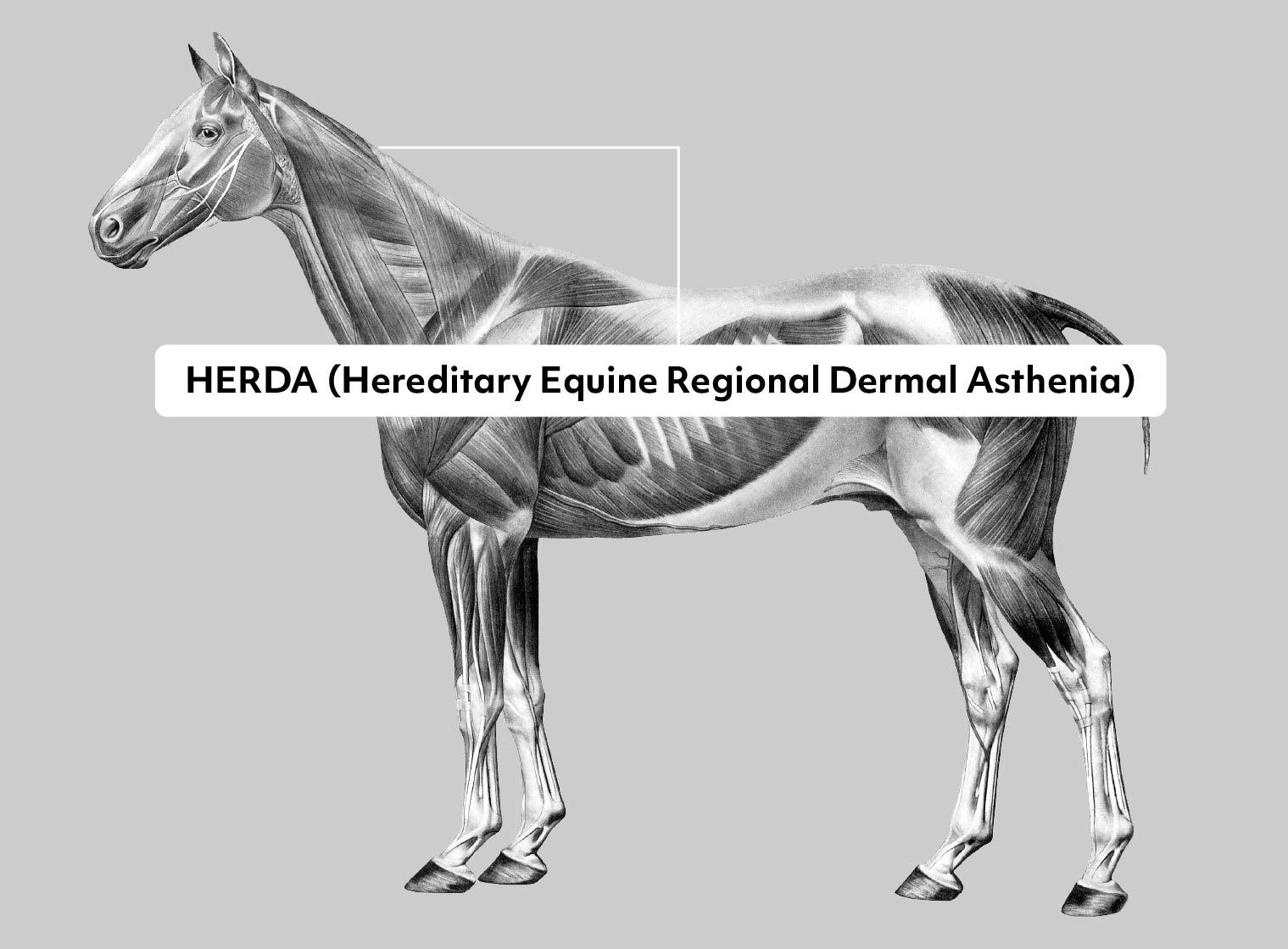Hereditary Equine Regional Dermal Asthenia (HERDA)
Gene or Region: PPIB
Reference Variant: G
Mutant Variant: A
Affected Breeds: Quarter Horse
Research Confidence: High - Findings reproduced in multiple studies
Explanation of Results: herda/herda = homozygous for Hereditary Equine Regional Dermal Asthenia, trait expressed, may result in severe/fatal health issues herda/n = heterozygous for Hereditary Equine Regional Dermal Asthenia, carrier n/n = no variant detected
General Description for Hereditary Equine Regional Dermal Asthenia (HERDA)
Hereditary Equine Regional Dermal Asthenia (HERDA) is a degenerative skin disease that primarily affects the American Quarter Horse breed. Loose skin is often an early indication of the disease, and severe seromas, hematomas, ulcerations usually develop around 1.5 years of age and progressively worsen. There is no cure, and the majority of affected animals have to be euthanized within 2-4 years.
A missense mutation in the equine cyclophilin B (PPIB) was determined to cause a functional defect in this protein, resulting in less effective catalysis of the rate-limiting step in collagen folding. Etalon offers diagnostic testing to determine carrier or affected status.
This disease follows an autosomal recessive mode of inheritance, so in order for the foal to be affected, both the sire and the dam must carry the allele. This also means that horses can appear normal but be carriers for the condition. If two carrier horses mate, there is a 25% chance that the foal will have HERDA. Studies estimate that ~3.5% of Quarter Horses are carriers. It's recommended that both carriers and clinically affected horses with HERDA be removed from breeding programs.
References
Tryon et al., “Homozygosity mapping approach identifies a missense mutation in equine cyclophilin B (PPIB) associated with HERDA in the American Quarter Horse.” (2007) Genomics 90: 93-102. PMID: 17498917
Ishikawa Y, Vranka JA, Boudko SP, Pokidysheva E, Mizuno K, Zientek K, Keene DR, Rashmir-Raven AM, Nagata K, Winand NJ, Bächinger HP. Mutation in cyclophilin B that causes hyperelastosis cutis in American Quarter Horse does not affect peptidylprolyl cis-trans isomerase activity but shows altered cyclophilin B-protein interactions and affects collagen folding. J Biol Chem. 2012 Jun 22;287(26):22253-65. doi: 10.1074/jbc.M111.333336. Epub 2012 May 3. PMID: 22556420; PMCID: PMC3381186.
More Horse Health
Foal Immunodeficiency Syndrome
Foal immunodeficiency syndrome (FIS) is a failure in the development of the adaptive immune system. At 3-6 weeks of age, once the maternal antibodies begin to degrade, foals exhibit signs of anemia, diarrhea, and pneumonia. As these foals fail to respond to treatment for infections, they are humanely euthanized at a young age.
Glanzmann Thrombasthenia
Glanzmann Thrombasthenia (GT) is a blood platelet function disorder, resulting from a reduction in the platelet fibrinogen receptor protein. Clinical signs can be characterized by bleeding on the skin or from the mouth/nostril/gastrointestinal mucosas, and may include skin rashes with blood spots under the skin, nasal bleeding, gastrointestinal and gingival bleedings.
Glycogen Branching Enzyme Deficiency
Glycogen Branching Enzyme Deficiency (GBED) is a lethal recessive disorder characterized by seizures, muscle weakness, respiratory failure, and death. Many affected foals do not make it full term and are aborted or stillborn. Carriers (gbed/n) have no known issues.
